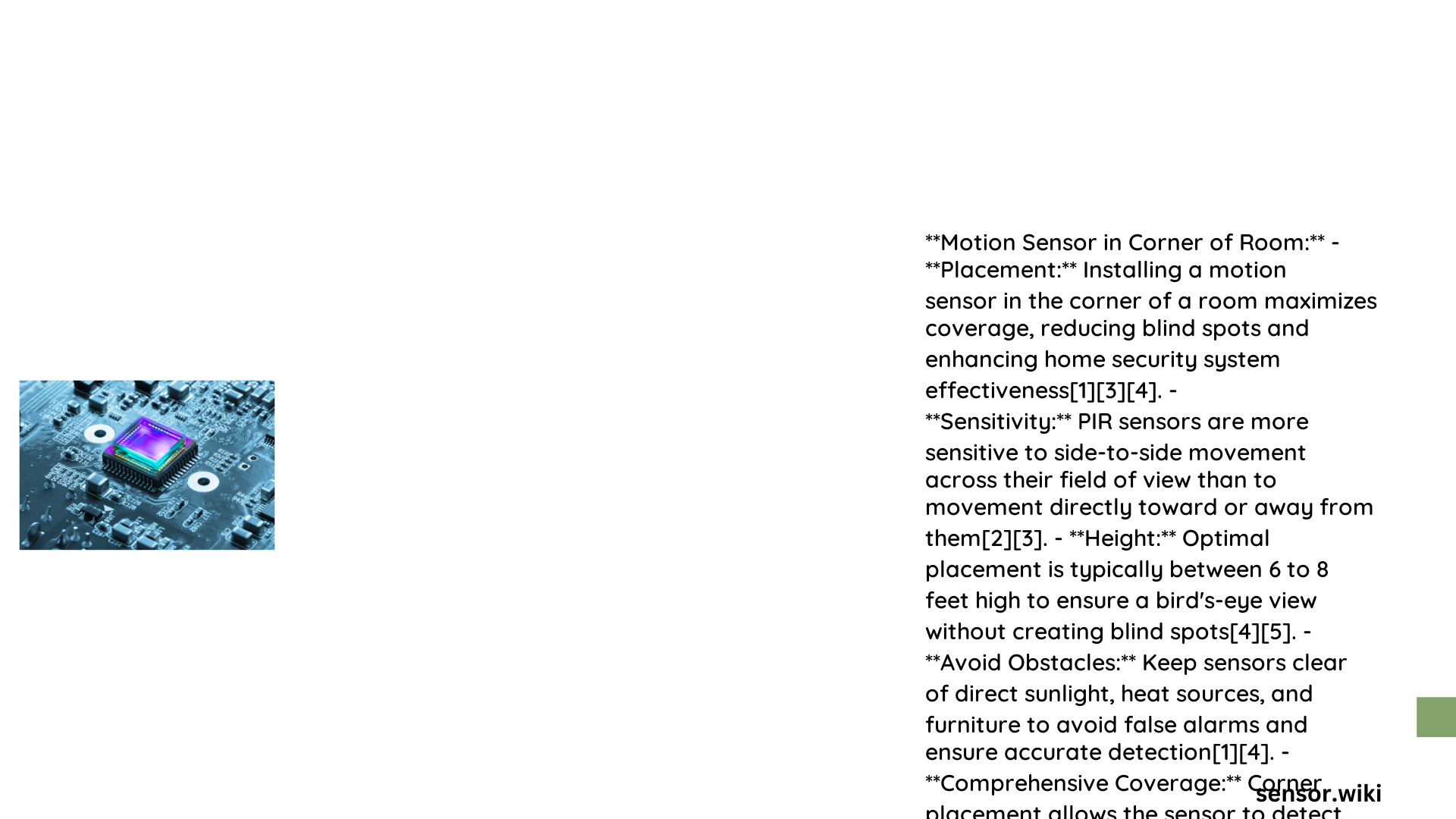Motion sensors strategically placed in room corners can dramatically enhance home security and automation. These intelligent devices leverage advanced detection technologies to monitor spaces efficiently, capturing movement across wide areas with precision. Understanding the nuanced placement techniques can transform your room’s surveillance capabilities, ensuring comprehensive coverage while minimizing false alarm risks.
What Makes Corner Motion Sensor Placement Unique?
Corner motion sensors offer distinctive advantages over traditional wall-mounted alternatives. Their strategic positioning allows for:
- Wider detection range
- Reduced blind spots
- Enhanced peripheral monitoring
- Improved spatial coverage
How High Should Motion Sensors Be Mounted?
Optimal mounting height plays a critical role in motion sensor effectiveness. Experts recommend:
| Sensor Type | Recommended Height | Coverage Potential |
|---|---|---|
| PIR Sensors | 2.0-2.2 meters | Up to 26 feet radius |
| Microwave Sensors | 2.1-2.4 meters | Up to 40 feet radius |
Key Considerations for Corner Sensor Placement
When installing motion sensors in room corners, several crucial factors demand attention:
- Angle Precision
- Position sensor at 90-degree angle to intrusion path
- Maximize transverse detection capabilities
-
Minimize potential interference zones
-
Environmental Constraints
- Avoid areas with temperature fluctuations
- Keep away from direct sunlight
- Minimize proximity to air conditioning vents
- Prevent interference from large moving objects
What Detection Technologies Work Best?
Different motion sensor technologies offer unique advantages:
Passive Infrared (PIR) Sensors
- Most common residential solution
- Detect infrared radiation changes
- Low power consumption
- Cost-effective implementation
Microwave Sensors
- Emit continuous radio waves
- Detect movement through object reflection
- Higher sensitivity
- Suitable for complex environments
How to Optimize Sensor Performance?
Performance optimization requires strategic planning:
- Use adjustable mounting brackets
- Conduct comprehensive testing
- Implement multiple sensor layers
- Regularly calibrate detection zones
Cost Considerations for Corner Motion Sensors
| Sensor Category | Price Range | Installation Cost |
|---|---|---|
| Basic PIR | $20-$50 | Self-installation |
| Advanced Wireless | $50-$100 | Professional setup |
| Professional Systems | $100-$300 | Comprehensive service |
Common Installation Challenges
Potential obstacles include:
– Signal interference
– False alarm triggers
– Limited detection range
– Complex room geometries
Expert Recommendations

Professional installers suggest:
– Use dual-technology sensors
– Implement overlapping detection zones
– Select sensors with adjustable sensitivity
– Consider professional consultation for complex spaces
Technical Specifications to Evaluate
When selecting corner motion sensors, examine:
– Detection angle
– Range capabilities
– Power requirements
– Wireless compatibility
– Integration potential
Final Insights
Successful motion sensor installation demands meticulous planning, technical understanding, and strategic positioning. Corner placements offer unique advantages when executed with precision and expertise.
Practical Tips
- Always test sensor functionality post-installation
- Regularly maintain and calibrate sensors
- Stay updated with emerging detection technologies
Reference:
– Athenalarm Motion Sensor Guide
– SmartHome Security Resources
– Professional Security Installation Tips
